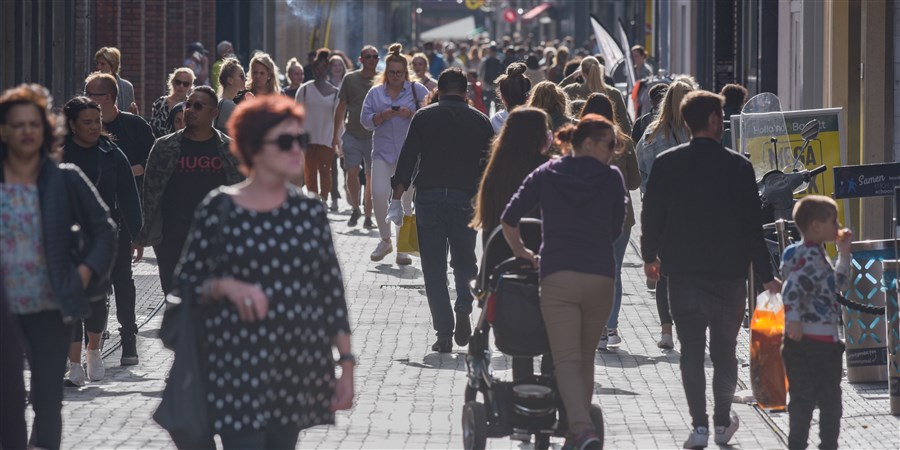People with low education and migration background have lowest levels of well-being

Well-being is more than just income and wealth: health, job situation, trust and quality of living environment, for example, all have a part to play. And like income and wealth, this broader version of well-being is not equally distributed across all population groups.
The distribution of well-being across the population is measured using thirteen indicators for the themes well-being (in terms of satisfaction with life), material well-being, health, labour and leisure time, housing, society, safety and the environment. For each indicator, a group can score above the average for the entire population, below average or neutral. Deviation from the average is considered to be favourable or unfavourable, in terms of whether it increases or decreases well-being. Where possible values for 2021 are included for the indicators.
Lower well-being among people with a non-western migration background in particular
The outcomes for the group with a non-western migration background are unfavourable for all thirteen indicators. For people with a western background this is the case for eight of the indicators. The group with no migration background has not one unfavourable outcome, and favourable outcomes for twelve of the thirteen indicators.The often unfavourable situation of people with a migration background is only partly caused by differences in the group’s education level, age composition, or male to female ratio compared with the group with no migration background. Even when these differences are taken into account, the groups with a western and a non-western migration background still score more unfavourably.
Lower education levels also have lower well-being levels
People with lower levels of education have unfavourable scores for nine of the thirteen indicators. This compares to just two out of the thirteen indicators below average for people with higher education. Here, too, the poorer outcomes for the group with lower education levels is unrelated to other background characteristics. If we correct for differences in age composition, sex and migration background, the picture for lower educated people becomes even slightly more unfavourable.
Relatively many unfavourable outcomes are also found in age the group to 35 years. The 45-74-year age groups score relatively well compared to average. If we compare the sexes, there are only differences on a few indicators, for most of them there are no differences between men and women. Men score more favourably on perceived health, net labour participation and trust in other people, while women score more favourably in terms of being a victim of crime (excl. cybercrime).
Sex
Age
Education level
Migration background
People with accumulation of poor outcomes often lower educated
The study looked not only at group averages, but also at the outcomes at individual level. This was to examine whether – and if so to what extent – favourable and unfavourable outcomes are concentrated at individual level. Nine well-being indicators were used for this analysis. <<toelichting >>. It showed that favourable outcomes accumulated for a total of 26 percent of individuals: they had positive scores on at least seven of the nine indicators. Eighteen percent of individuals had an accumulation of unfavourable scores: negative scores for three or more indicators.
At this individual level, positive outcomes of well-being indicators accumulate relatively strongly among people with higher education and people aged 45-64 years. People with lower education, people aged 65-74 years and people with a non-western migration background are more likely to show concentrations of unfavourable outcomes. After taking into account the correlations between age, sex, education level and migration background, it turns out that education level is the strongest determinant for the number of indicators for which people have favourable or unfavourable results.
In summary, people with a low education level and people with a non-western migration background not only score low on average; in these groups concentrations of unfavourable outcomes are also more likely to occur for individual persons.
Sex
Age
Highest completed level of education
Migration background